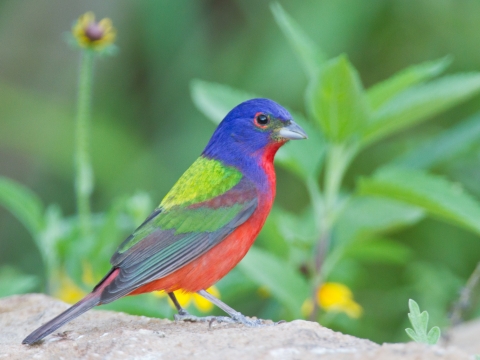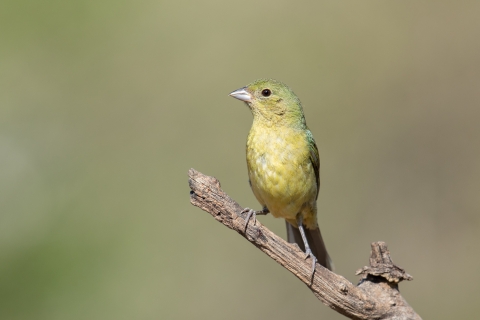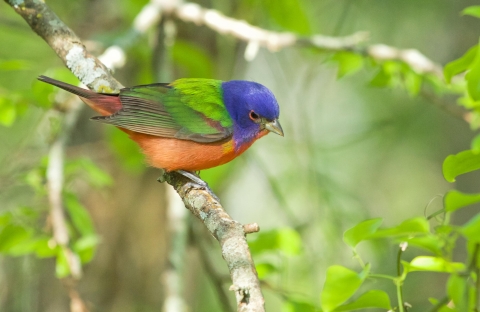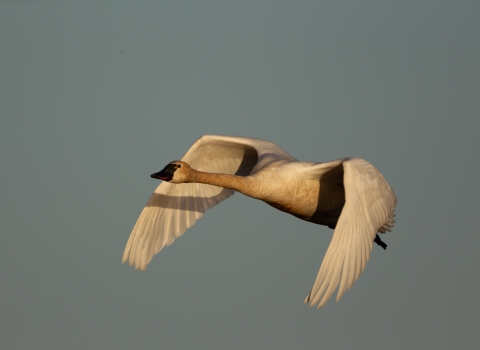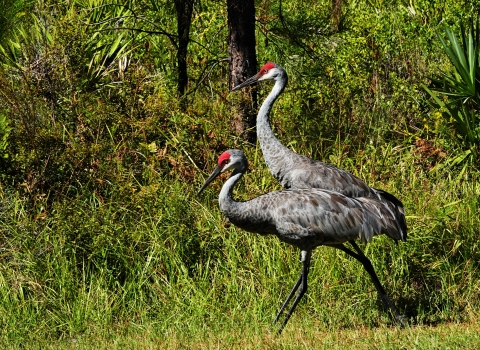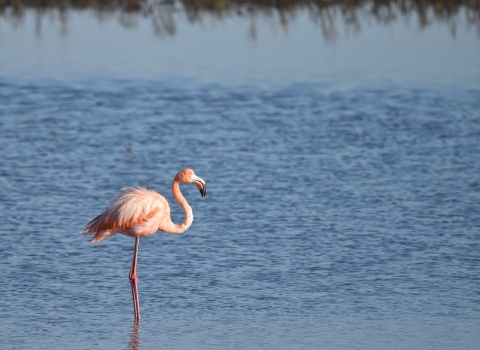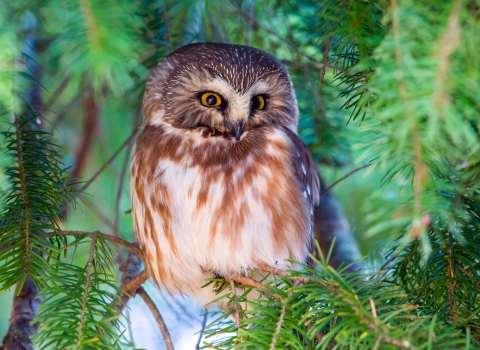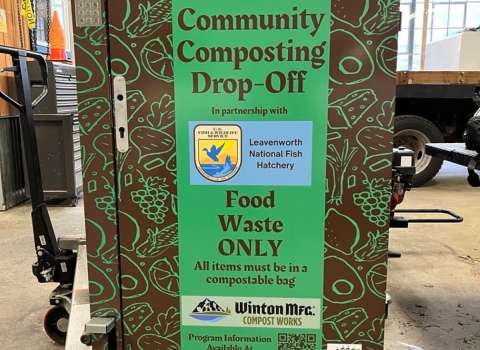Majestic and vibrantly muti-colored, this migratory songbird will win any beauty pageant. The French named it “nonpareil,” which means “without equal.”
Identifying Painted Buntings
Males and females are easily distinguished. Males sport bright blue heads, green backs, and a red throat, and chest.
Females and juvenile birds are a bright green. All painted buntings have stubby and thick bills and pale eye rings. They reach five and a half inches, about the size of a sparrow or a finch. Their wings are rounded, and they have rounded, notched and square-tipped tails.
Painted Bunting Photo Contest
As part of our Bird of the Month series, we invite you to submit your photos of painted buntings in a photo contest.
In the file name of your photo, please include your first and last name, contact email address, and the location where the photo was taken. Submissions will be judged by a panel of U.S. Fish and Wildlife Service employees. Once a winner is selected, they will be contacted via email and asked to sign a photo release form. This form protects the photographer's rights, ensures proper credits are given, and grants the U.S. Fish and Wildlife Service permission to share the photo on our social media channels.
The winner will be announced publicly near the end of each month on our Southeast Regional Facebook and X (formerly known as Twitter) platforms.
A photo contest will occur each month for each featured bird species. At the end of 2024, all twelve winning photographs will be shared on our regional social media accounts.
Submit your original photos of painted buntings here!
Refuges where you can see Painted Buntings
Eastern Population Range
- Harris Neck National Wildlife Refuge, 5000 Wildlife Dr NW, Townsend, GA 31331, Telephone: 843-784-2468
- Merritt Island National Wildlife Refuge, 1963 Refuge Headquarters Road, Titusville, FL 32782, Telephone: 321-861-0667
- Pinckney Island National Wildlife Refuge, 694 Beech Hill Lane, Hardeeville, SC 29927, Telephone: 843-784-2468
- Santee National Wildlife Refuge, 2125 Fort Watson Road, Summerton, SC 29148, Telephone: 803-478-2217
Western Population Range
- Holla Bend National Wildlife Refuge, 10448 Holla Bend Road, Dardanelle, AR 72834 Telephone: 479-229-4300
- Bald Knob National Wildlife Refuge, 1439 Coal Chute Road, Bald Knob, AR 72010 Telephone 501-724-2458
- Bayou Sauvage National Wildlife Refuge, 17160 Chef Menteur Highway, New Orleans, LA 70129, Telephone 985-882-2000
- Lacassine National Wildlife Refuge, 209 Nature Road, Lake Arthur, LA 70549, Telephone: 337-774-5923
Five Painted Buntings Fast Facts:
There are two distinct breeding populations of Painted Buntings, an eastern population, and a western population. The western population is in the south-central U.S. and northern Mexico including Louisiana, Arkansas, Texas, Oklahoma, Mississippi, Kansas and Missouri. The eastern population ranges along the Atlantic Coast from North Carolina to central Florida.
Painted buntings from the eastern breeding population likely winter in Florida and the northwestern Caribbean. Those from the western breeding population winter more broadly throughout Mexico and Central America.
Unlike most songbirds, the Painted Bunting’s western population begins its fall migration before molting (shedding of old feathers so they can be replaced by new feathers), molts in staging areas in northern Mexico, then continues to migrate south. This migration-molt pattern is common among waterfowl, but it is rare among songbirds. In contrast to the western population, the eastern population of Painted Buntings molts on its breeding grounds before fall migration.
For most of the year, Painted Buntings eat seeds, and they prefer white millet. During the breeding season, they feast on insects.
Male Painted Buntings will fight vigorously to protect their territory during the breeding season. While courting female buntings during spring, males spread their colorful feathers resembling a tiny male turkey. A female indicates her interest by pecking at the ground. After the breeding season, Painted Buntings may become more social, sometimes forming small groups with other buntings, or joining larger groups that may include other species of seed-eating birds such as sparrows and finches.



